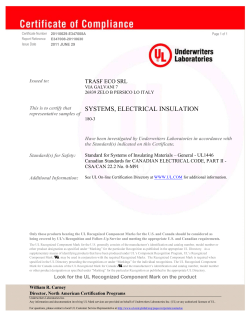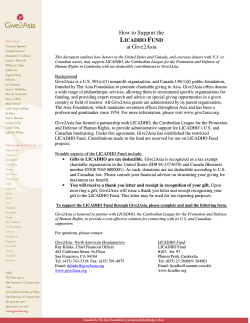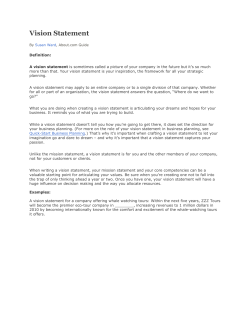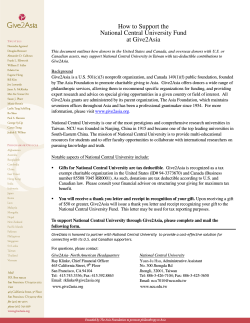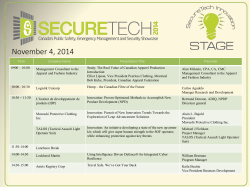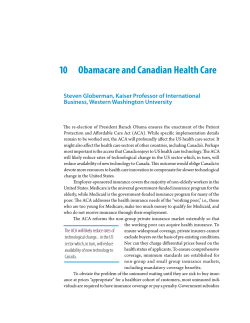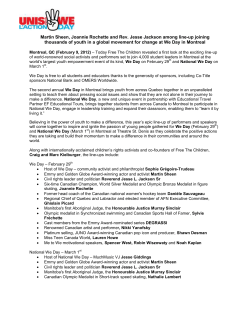
C How much do we really pay?
How much do we really pay? C dollars was spent on publicly funded health care in 2010 (CIHI, 2010). If Canadians understood the true cost of our publicly funded health care system, we would be able to better assess whether we are receiving value for our money. A more informative measure of the cost of our health care system is health spending on a per capita basis. The $125 billion spent on health care in 2010 is approximately $3,663 per Canadian (CIHI, 2010). This would be the cost of the public health care insurance plan if every Canadian resident paid an equal share. However, some Bigstock ? Milagros Palacios and Nadeem Esmail anadians often misunderstand the true cost of our public health care system. This is partly because health care consumption is free1 at the point of use, which leads many to underestimate grossly the actual cost of the care delivered. Furthermore, health care is financed through general government revenues rather than through a dedicated tax, which blurs further the true dollar cost of the service. In addition, health spending numbers are often presented in aggregate, which results in a number so large that it becomes almost meaningless to the average Canadian. For instance, consider that approximately $125 billion of our tax ? ? ? ? ?? ? ? ? ??? ? The price of public health care insurance C ana d i ans are children and dependents, and thus are not taxpayers, and Canadians certainly do not pay equal amounts in taxes each year. Given the nature of our tax system, higher-income earners bear a greater proportion of the tax burden than lower-income earners, and thus contribute proportionally more to our public health care system. Table 1: Average income and average total tax bill of representative families, 2010* Family type Average cash income Average total tax bill Tax rate Health care insurance Unattachedindividuals $36,427 $14,040 38.5% $3,594 2 Parents, 0 Children $90,034 $41,073 45.6% $10,514 2 Parents, 1 Child $106,102 $41,374 39.0% $10,591 2 Parents, 2 Children $108,428 $42,455 39.2% $10,867 1 Parent, 1 Child $41,553 $12,099 29.1% $3,097 1 Parent, 2 Children $44,702 $12,086 27.0% $3,094 *Preliminary estimates Source: The Fraser Institute's Canadian Tax Simulator, 2010. www.fraserinstitute.org Fraser Forum January/February 2011 35 Table 2: Average income and total tax bill in each decile, 2010* Decile** Average cash income Average total tax bill Tax rate Health care insurance 1 $11,763 $1,911 16.2% $489 2 $25,252 $4,769 18.9% $1,221 3 $34,180 $9,089 26.6% $2,327 4 $43,152 $14,508 33.6% $3,714 5 $52,897 $20,243 38.3% $5,182 6 $65,308 $26,400 40.4% $6,758 7 $79,259 $33,843 42.7% $8,663 8 $97,486 $41,459 42.5% $10,612 9 $123,452 $53,989 43.7% $13,820 10 $234,129 $125,232 53.5% $32,056 *Preliminary estimates **Deciles group families from lowest to highest incomes with each group containing 10% of all families. The first decile, for example, represents the 10% of families with the lowest incomes. In order to more precisely estimate the cost of public health care insurance for the average Canadian family in 2010, we must determine how much tax an average family pays to all three levels of government. The percentage of the family’s total tax bill2 that pays for public health insurance is then assumed to match the share of total government tax revenues (income) spent on health care—25.6% in 2009/10 (Statistics Canada, 2010; CIHI, 2010; authors’ calculations). Table 1 shows six Canadian family types, the estimated average income3 for those family types in 2010, and their estimated dollar contribution to health care. In 2010, the average unattached (single) individual, who earned a little more than $36,400, paid approximately $3,594 for public health care insurance. An average Canadian family consisting of two adults and two children (earning a little more than $108,400) paid about $10,867 for public health care insurance. Table 2 divides the Canadian population into ten income groups (deciles) to show what families from various income brackets paid for public health care insurance in 2010. 36 According to this calculation, the 10% of Canadian families with the lowest incomes paid an average of about $489 for public health care insurance. The 10% of Canadian families who fall into the 5th decile (who earn an average income of $52,897) paid an average of $5,182 for public health insurance. The families among the top 10% of income earners in Canada paid $32,056. The costs of public health care insurance presented in Tables 1 and 2 are a significant departure from the per capita figure of $3,663 given earlier. Our hope is that these figures will provide Canadians with a clearer picture of just how much they pay for public health care insurance. With a more precise estimate of what they really pay, Canadians will be in a better position to decide whether they are getting a good return on the money they spend on health care. 2 The total tax bill includes income taxes (personal and business); property taxes; sales taxes; profit taxes; health, social security, and employment taxes; import duties; license fees; taxes on the consumption of alcohol and tobacco; natural resource fees; fuel taxes; hospital taxes, and a host of other levies. Notes Fraser Institute (2010). The Fraser Institute’s Canadian Tax Simulator, 2010. Fraser Institute. 1 In dollar terms. There are costs associated with health care use in Canada that are not monetized, such as wait times for access to medical services. Fraser Forum January/February 2011 www.fraserinstitute.org 3 The definition of income used throughout this piece is cash income. Cash income includes wages and salaries, self-employment income (farm and non-farm), interest, dividends, private and government pension payments, old age pension payments, and other transfers from governments (such as universal child care benefit). References Canadian Institute for Health Information [CIHI] (2010). National Health Expenditure Trends, 1975-2010. Canadian Institute for Health Information. Statistics Canada (2010). Provincial Economic Accounts.
© Copyright 2025
